How to Successfully Socialize Young Alpacas
To successfully socialize young alpacas, start by calmly getting down to their level and moving gently to avoid frightening them. Let them approach you at their own pace, offering your hand softly to sniff. Pay close attention to their body language—relaxing signs mean comfort, while spitting or pinned ears signal stress. Build trust with consistent, soothing interactions and positive reinforcement like treats. Gradually introduce social settings and gentle handling to strengthen bonds. Keep going, and you’ll discover even more ways to nurture these connections.
Key Takeaways
- Approach young alpacas calmly at their level with gentle movements and soft speech to reduce intimidation and build trust.
- Allow alpacas to approach you at their own pace, offering the back of your hand for non-threatening contact.
- Use positive reinforcement like treats consistently to create positive associations and encourage friendly behavior.
- Gradually introduce alpacas to group socialization activities under supervision to develop vital social skills and reduce stress.
- Recognize and respond to alpacas’ body language by giving space when needed and maintaining gentle, soothing interactions.
Approaching Young Alpacas With Calm and Patience
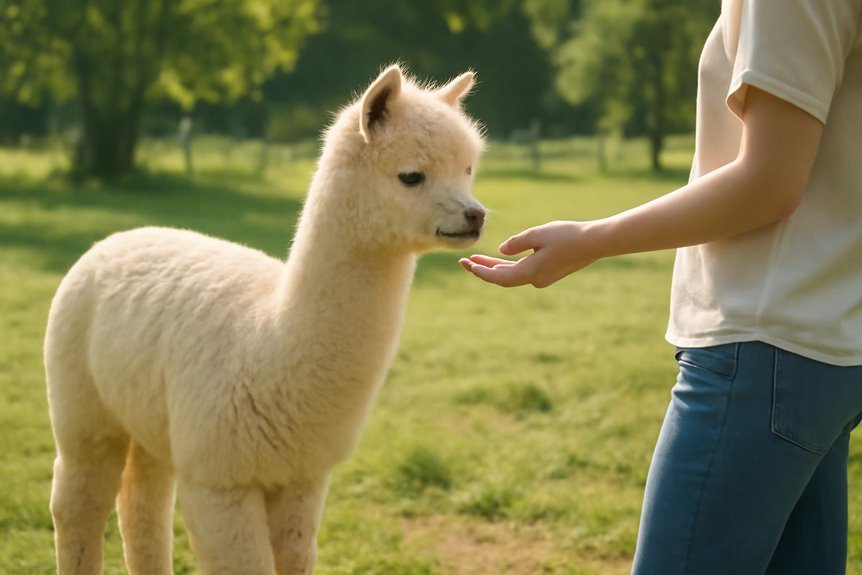
When approaching young alpacas, the first thing you should do is get down to their level by bending or sitting to avoid intimidating them. This simple act helps the young alpacas feel safer, making it easier for you to socialize and bond with them. You should stay calm and use gentle movements, speaking softly to build trust. Let the young alpacas approach you at their own pace; don’t rush the interaction. Offering the back of your hand for them to sniff is a non-threatening way to initiate contact. Spend consistent, positive time near them to strengthen your connection. By approaching with patience and calm, you create an environment where young alpacas feel secure, paving the way for a lasting bond.
Building Trust Through Gentle Interaction
Although gaining the trust of young alpacas takes time, your gentle presence and consistent, calm interactions will help them feel safe and secure. Building trust relies on gentle interaction, where you approach young alpacas at their level—sitting or bending down—to increase your approachability. Use positive reinforcement like hand-feeding treats such as pellets or carrots to create positive associations and encourage bonding. Maintain soft eye contact and speak in a soothing voice to foster an emotional connection, showing affection without overwhelming them. Let the young alpacas set the pace during socialization, allowing them to approach when comfortable. This patient, respectful approach strengthens trust, making future interactions smoother and more rewarding for both of you.
Recognizing and Responding to Alpaca Body Language
Building trust through gentle interaction lays the foundation for understanding your young alpacas better. Recognizing and responding to alpaca body language is an important part of raising alpacas that are healthy and happy. As an alpaca owner, you’ll notice calm alpaca behavior when they have relaxed stances with lowered heads and ears. If a young alpaca spits or shows teeth, give it space—it’s signaling discomfort. When new alpacas approach with lowered heads and ears back, they might be scared or submissive, so respond gently. Also, learn when to make eye contact; steady, gentle eye contact builds trust, but avoiding it can ease a nervous alpaca. Watching these subtle cues helps you support your alpacas’ well-being and social comfort.
Gradual Introduction to Socialization Activities
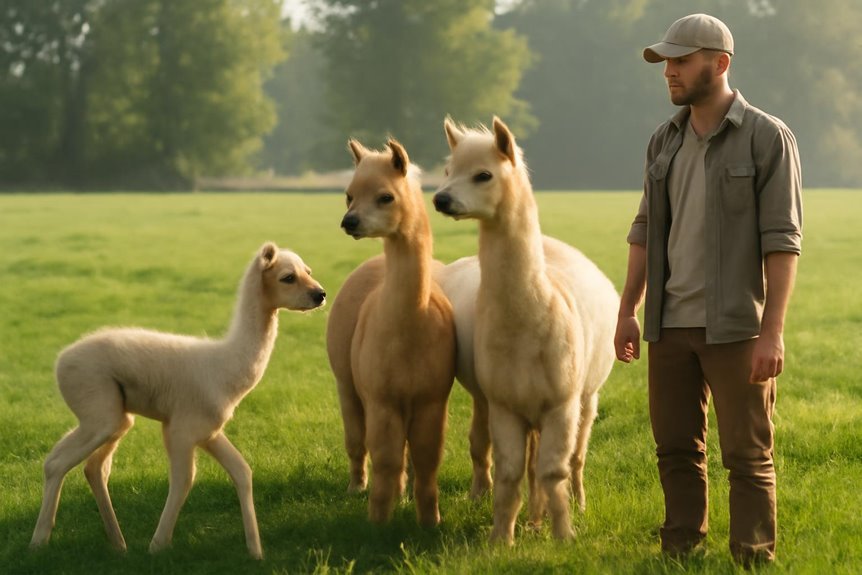
Since young alpacas are still learning to navigate their social world, introducing them gradually to group settings helps reduce stress and encourages positive interactions. Gradual introductions involve supervised socialization activities where you allow young alpacas to interact within a controlled environment, fostering vital social skills. When adding a new alpaca to the herd, take it slow to minimize anxiety and give them time to adjust to the existing social structure. Close monitoring of interactions during these sessions is essential to guarantee each alpaca feels safe and comfortable while finding their place in the hierarchy. Keeping young alpacas with their mothers and herd mates early on builds strong bonds, aiding communication and reducing future anxiety as they grow socially confident.
Encouraging Positive Human-Alpaca Relationships
When you spend consistent time with young alpacas, you help them develop trust and reduce their fear of humans. Socializing them through regular, gentle interactions builds familiarity, making them more comfortable around you. Use positive reinforcement, like offering treats such as pellets or apples, to encourage friendly behavior and strengthen your bond. Gradually introduce human handling and grooming, ensuring each experience is calm and positive. Speak softly and use their names during interactions to create a sense of security. By moving gently and predictably, you’ll help alpacas interpret your behavior without fear. These steps foster a trusting relationship, making socializing enjoyable for both of you and encouraging young alpacas to welcome human contact confidently and calmly.
Frequently Asked Questions
How to Make Friends With Alpacas?
To make friends with alpacas, you’ll learn their body language, use gentle feeding techniques, enjoy grooming tips, engage in playtime activities, respect space requirements, understand vocal communication, and practice bonding exercises to build trust and connection.
What Not to Do Around Alpacas?
You shouldn’t make loud noises or sudden movements around alpacas. Don’t chase or corner them, avoid aggressive behavior, skip unfamiliar scents, and definitely don’t tease them. These actions stress alpacas and cause fear or defensive reactions.
How to Introduce New Alpacas?
When introducing new alpacas, you’ll want gradual introductions in a safe enclosure setup. Observe body language and group dynamics closely. Use feeding techniques and positive reinforcement to encourage calm, friendly interactions, ensuring smooth integration into the herd.
What Is the Social Hierarchy of Alpacas?
Though alpacas seem calm, their social hierarchy thrives on dominance displays and communication signals. You’ll notice play interactions and grooming rituals build social bonding, shaping herd dynamics that guide alpaca behavior within their tight-knit group.

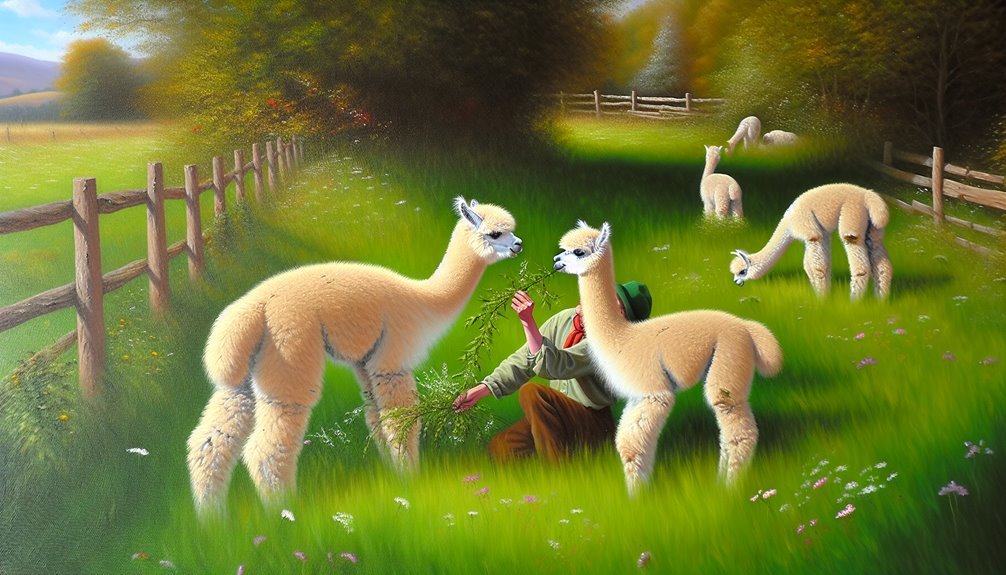
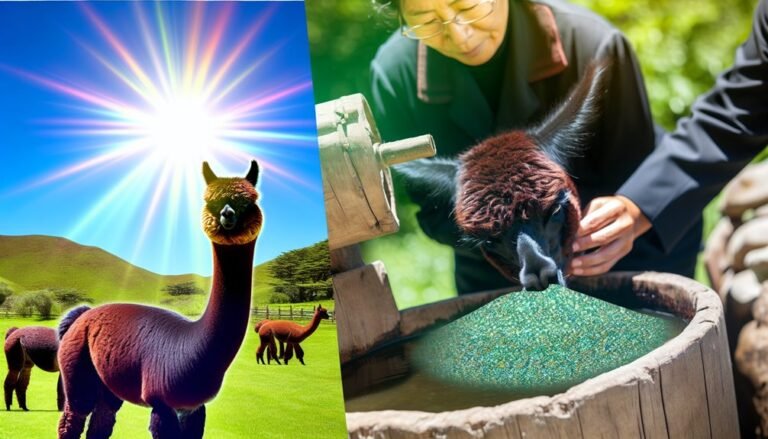
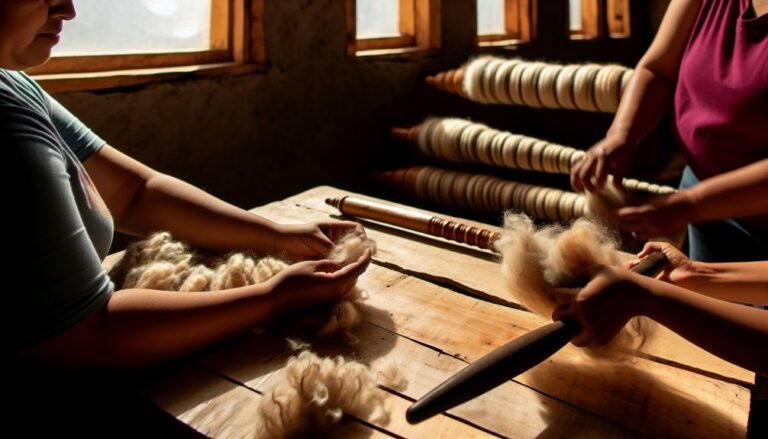




Our picks
Alpaca & Wool Felted Sole Inserts: Comfy Upgrade?
Best Alpaca Socks for Hiking: Ultimate Comfort and Durability on Trails
Best Alpaca Halter for Comfort and Control